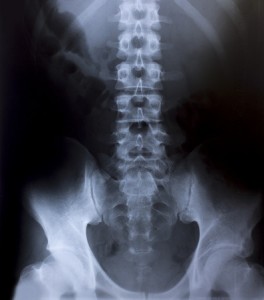 Musculoskeletal system disorders may affect many people in Chicago, Illinois, at some point. According to the Occupational Safety and Health Administration, work-related musculoskeletal disorders are a top cause of workplace pain and disability. These disorders, which affect the joints, tissues or nerves of the back and limbs, can prevent victims from engaging in numerous activities. When a musculoskeletal disorder completely precludes an individual from working, he or she has the right to seek Social Security disability benefits.
Musculoskeletal system disorders may affect many people in Chicago, Illinois, at some point. According to the Occupational Safety and Health Administration, work-related musculoskeletal disorders are a top cause of workplace pain and disability. These disorders, which affect the joints, tissues or nerves of the back and limbs, can prevent victims from engaging in numerous activities. When a musculoskeletal disorder completely precludes an individual from working, he or she has the right to seek Social Security disability benefits.
SSA criteria
The Social Security Administration requires a musculoskeletal impairment to cause loss of function for over 12 months or be expected to do so. The SSA uses three main metrics to evaluate loss of function: ability to ambulate effectively, ability to use fine or gross motor skills and pain experienced. Under these criteria, people who cannot walk without an assistive device or for long periods of time are considered disabled. So are people who cannot consistently or repeatedly perform tasks such as lifting and gripping. Individuals whose pain interferes with daily functioning are also considered disabled.
The SSA includes numerous disabling conditions in its list of musculoskeletal disorders that are automatically considered impairments. These include:
- Spinal disorders
- Deformities of bones or joints
- Soft tissue injuries
- Fractures
- Amputations
The SSA establishes specific criteria for injuries in each category. For instance, the amputation of one hand is not considered disabling, but the amputation of both hands is. People who suffer from an unlisted condition or fail to meet the SSA’s criteria can still obtain benefits if they show that a condition causes roughly the same level of disability as a listed condition does.
Documenting the disorder
People who suffer from a listed musculoskeletal disorder still need to provide proof of the condition and its disabling effects. Physical examinations and medical imaging, such as x-rays, CAT scans and MRIs, may serve as evidence of the disorder or injury. For certain conditions, including spinal disorders, the SSA additionally requires physicians to make specific observations or conduct certain tests.
People whose conditions are not included in the SSA’s list of musculoskeletal impairments may use the same forms of documentation. To provide additional evidence of the disability, a physician should complete a Residual Functional Capacity form, which evaluates the individual’s ability to perform daily tasks. Unlike medical records, the RFC can offer a conclusive opinion on the individual’s ability to find gainful employment.
Individuals who have questions about documentation can benefit from speaking with a Social Security disability attorney. An attorney can help an individual understand how the SSA evaluates claims and what can be done to improve the likelihood of the claim being approved.









